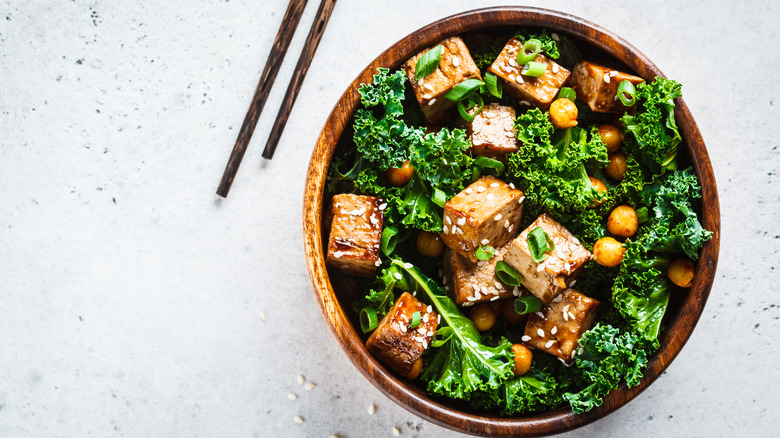If You Get A Headache After Eating Soy, Here's Why
If you've ever developed a headache after eating soy-rich foods, you are not alone. While many foods can trigger headaches and migraines, soy tends to be one of the foremost offenders. Soy, which comes from soybeans, is a popular legume, often used as an alternative to meat in vegetarian diets as well as a common staple in Asian cuisine (via Medical News Today). It can also be consumed in the form of non-dairy milk and cheese as well, for those who aim to avoid dairy products. A versatile food in itself, soy can be found on grocery shelves in the form of edamame, soy milk, tofu, tempeh, and many more options.
So what about soy in particular lends itself to triggering headaches? Soy contains a high level of tyramine, a monoamine substance produced by the breakdown of the naturally occurring amino acid tyrosine (via Healthline). Tyramine is known to trigger headaches and is likely the culprit behind your after soy-meal discomfort. Overall, soy products also have a high salt concentration, which can be dehydrating (via Penn Medicine). Dehydration is one of the most common causes of headaches.
MSG can also play a role in your after meal headache
In addition to tyramine and salt, monosodium glutamate, most commonly known as MSG, can also cause headaches. A long-known migraine trigger, MSG is a food by-product made during soy processing (via Livestrong). But MSG may not only trigger a headache, especially to those with a sensitivity to it. Consuming high amounts of MSG can also lead to nausea, diarrhea, vomiting, and other uncomfortable symptoms.
It's important to be aware that headaches related to foods containing soy may not appear until 24 hours after consumption (via WebMD). If you're starting to notice a trend between certain foods and headaches, it's best to start a food diary consisting of what you've eaten in the day or two before symptoms started. That way you can be prepared to speak with your healthcare provider and offer a full picture of events.
If you are sensitive to eating soy foods, it goes without saying that you should consider avoiding them. However tyramine is not only found in soy. High tyramine foods include fermented, cured, aged, and spoiled foods (via Healthline). Moderate to low tyramine foods include but are not limited to avocados, raspberries, fresh chicken, and fish. While there are some benefits to eating soy-rich foods, it's necessary to weigh the risks and benefits. If you get a nasty, pounding headache each time you eat a delicious tofu dish, it may be time to look for some new recipes to try!


